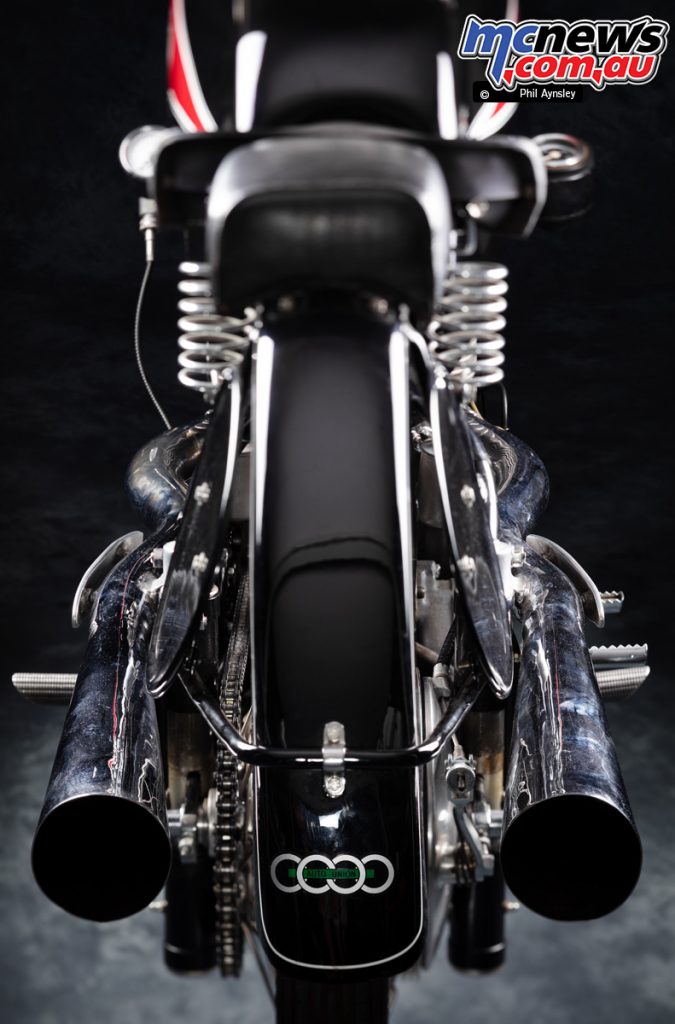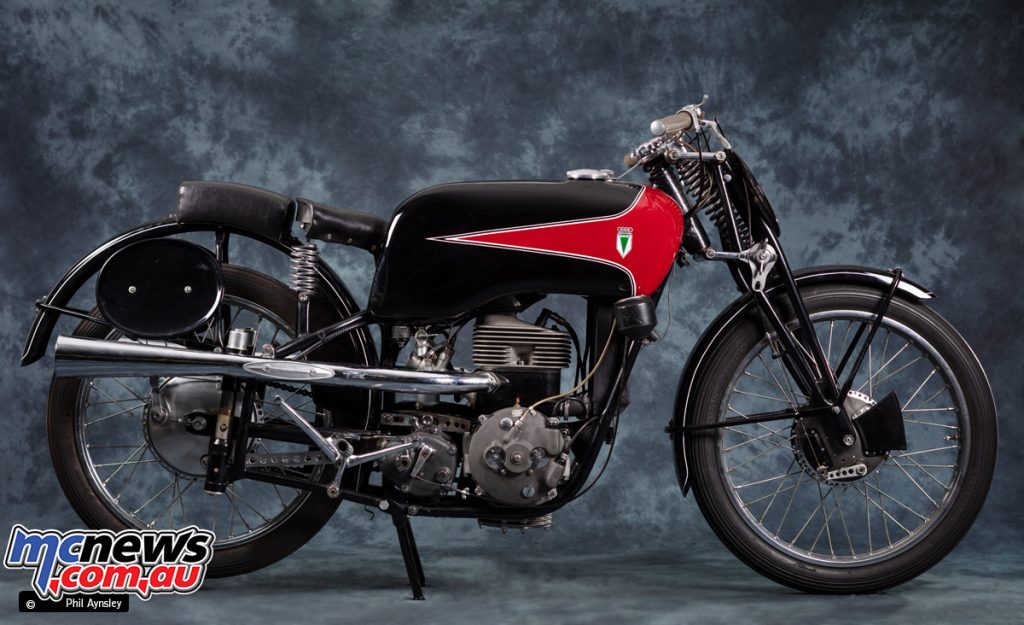DKW
A brief history of DKW ‘Damf Kraft Wagen’
With Phil Aynsley
It seems hard to believe now but in the 1930s DKW was one of the largest motorcycle manufactures in the world, with over 20,000 employees. It had been a fast rise since its founding in Zschopau, Germany in 1916 by Danish engineer Jørgen Rasmussen.
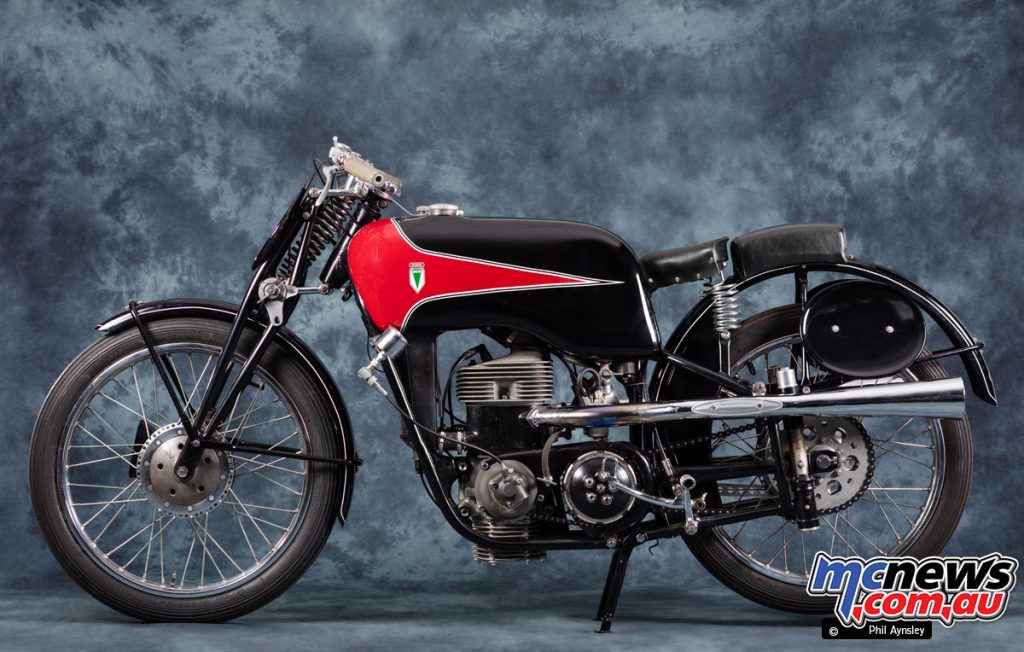
Rasmussen originally produced steam fittings before turning his hand to a steam powered car which he named the company after (Damf Kraft Wagen – “steam motor vehicle”).
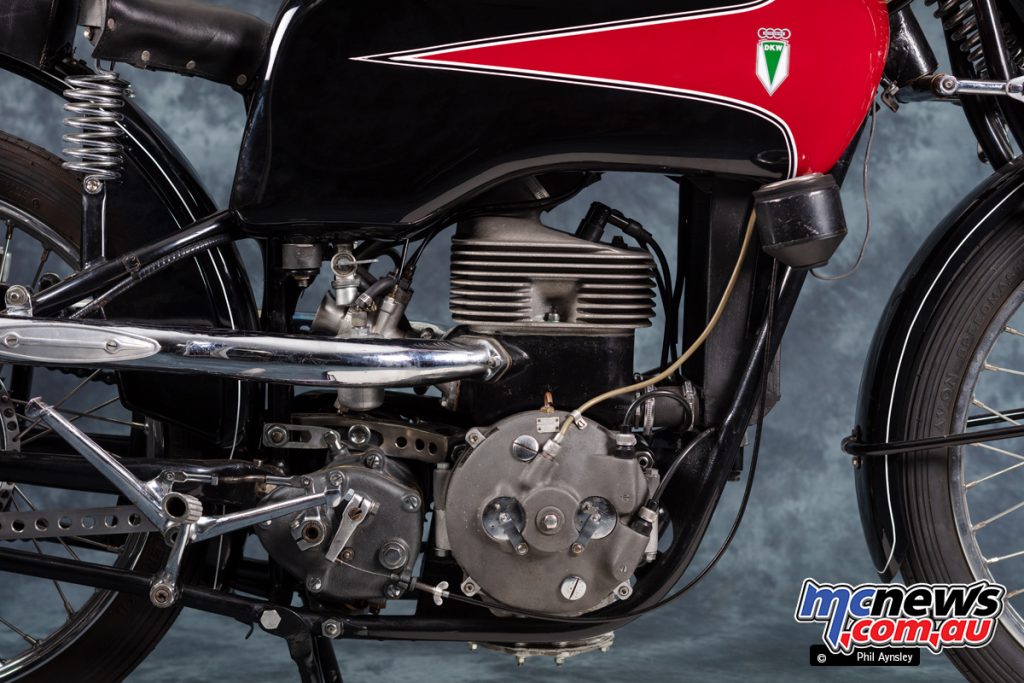
When this didn’t take off the company developed a 18cc toy steam stationary engine that sold well enough to fund the design (in 1921) of a 118cc 2-stroke auxiliary motor that could be fitted to a bicycle. Their first complete motorcycle, a 142cc 2-stroke, appeared the following year.
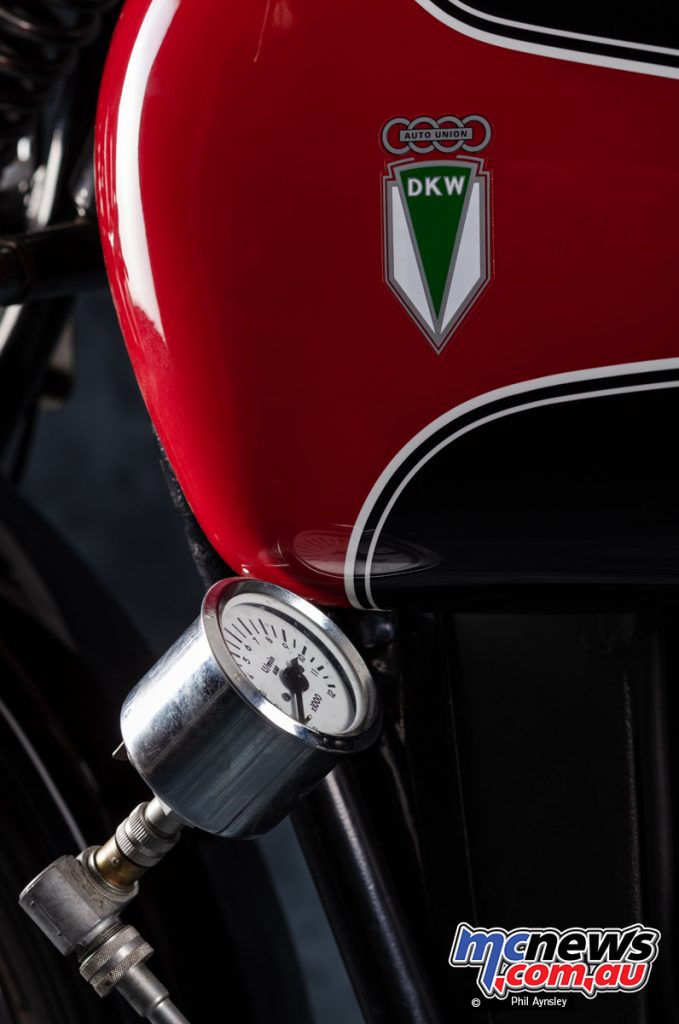
By 1928 Rasmussen was doing so well that he purchased a controlling share of the small car manufacturer Audi Work AG. DKW continued to concentrate on 2-stroke motors for both bikes and cars (including forced-induction V4s fitted to some car models in the 1930s).
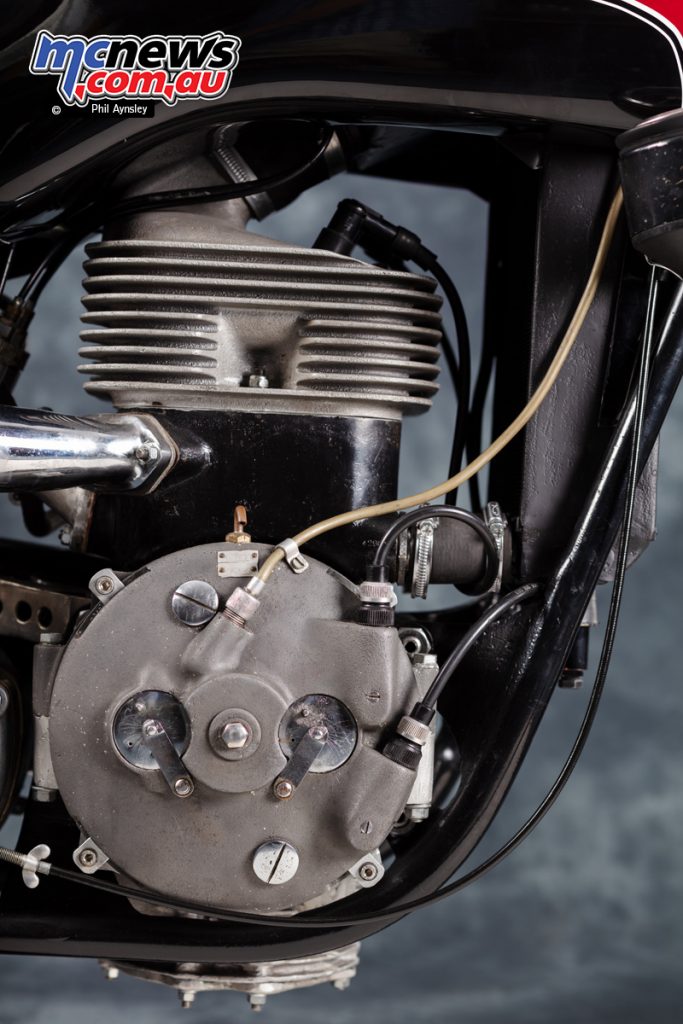
In 1932 the Great Depression forced the merging of DKW, Audi, Horch and Wanderer into the Auto Union company (the four-ring logo of which is still used by Audi today).

It was in the late 1920’s that DKW began development of the forced-induction two-stroke motorcycle engines that they become renowned for. These “Ladepumpe” (charging pump) designs used the Bichrome principle where the swept volume of the crankcase was reduced as the supercharging piston (set at 180º to the main piston) moved up, compressing the intake mix in the crankcase.
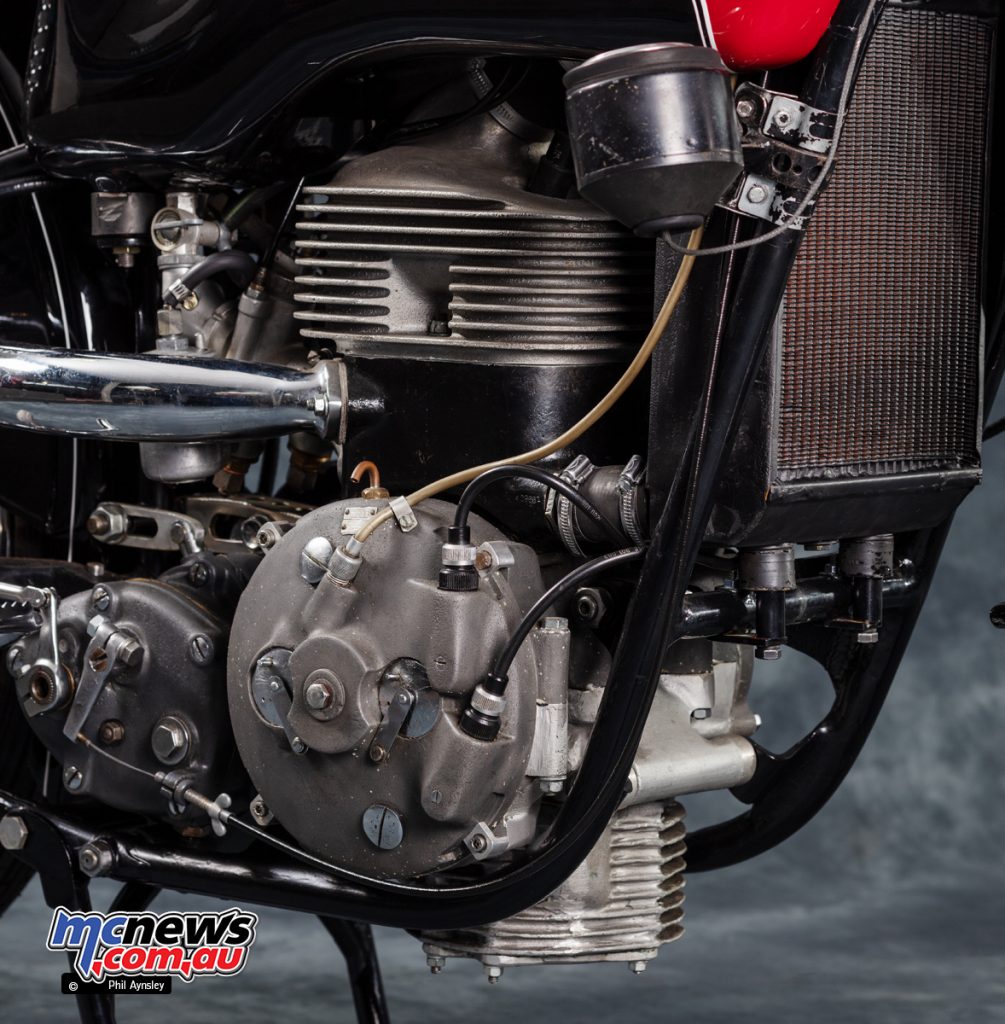
This was timed to occur as the main piston moved down, thereby forcing the mixture into the combustion chamber. The ARe 175cc and ORe 250cc singles were introduced in 1928 and were the first of a long line of successful DKW 2-stroke racers.
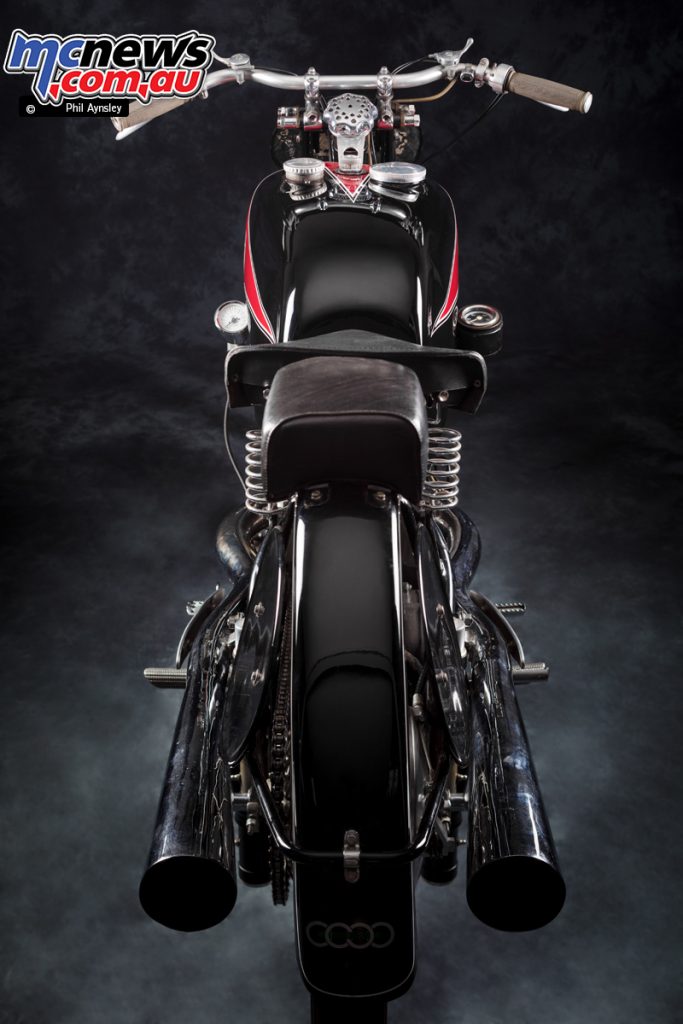
The next development was combining the Ladepumpe with multiple cylinders, in DKW’s case, split-singles. The split-single concept had been designed by Garelli in 1912, then taken up with success by Puch (winning the 1931 German GP with a 250cc water-cooled, supercharged split-single).
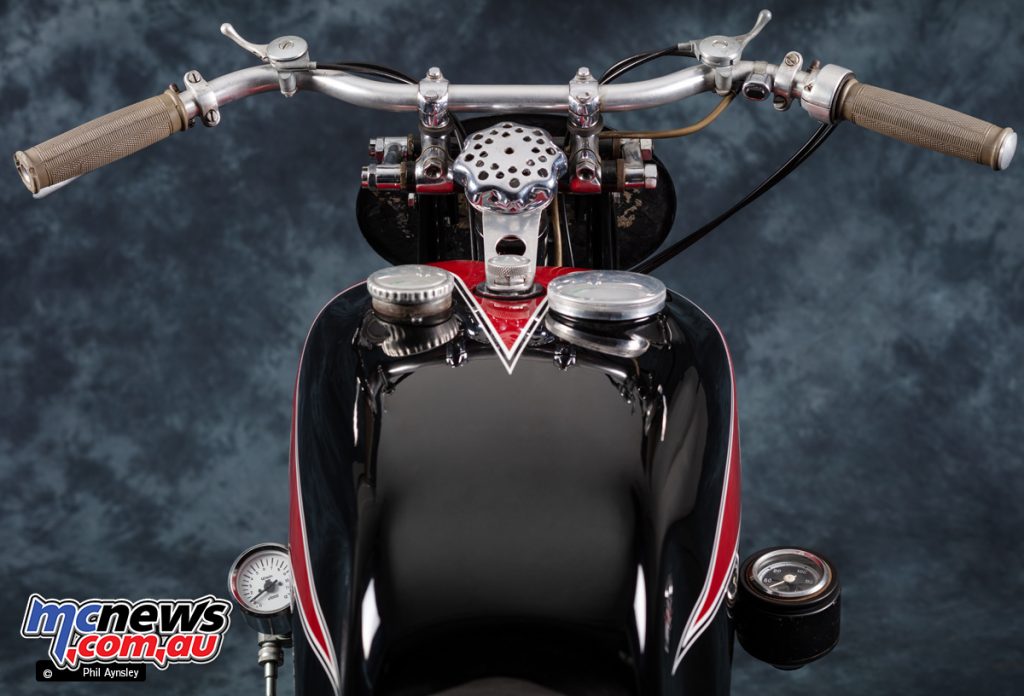
The split-single concept had two pistons, each in it’s own barrel but sharing a common combustion chamber. The pistons rise and fall in unison with the intake charge controlled by one and the exhaust by the other. For DKW the advantage was the supercharged intake mixture could be introduced into the combustion chamber without a lot of it blowing out the exhaust port.
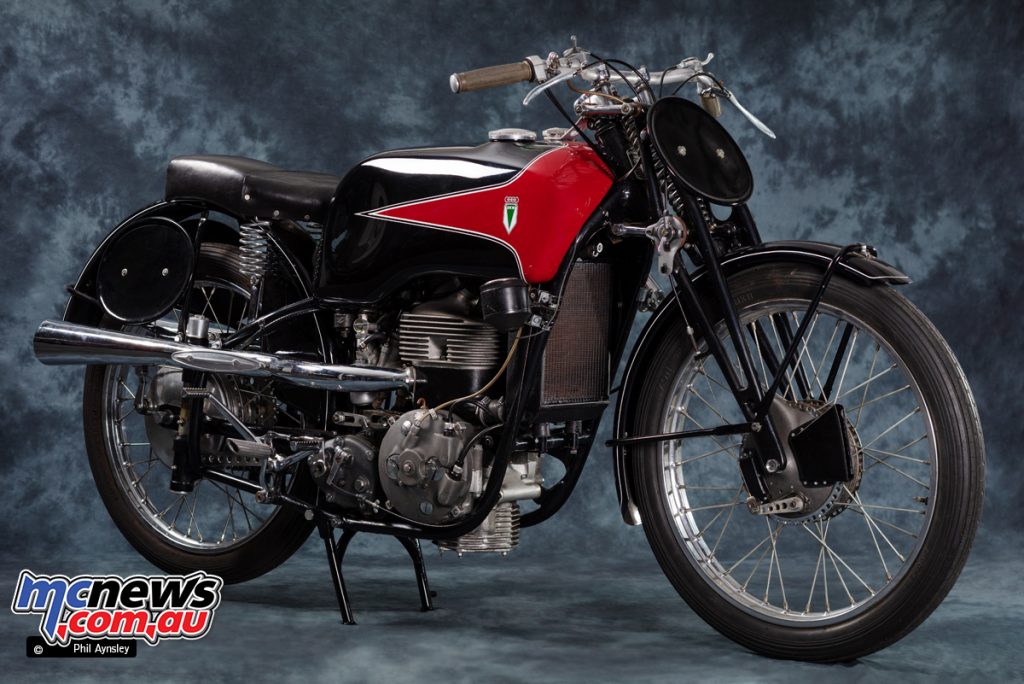
The first of their new design was the 1935 URe 250cc which had the supercharging piston facing forwards at 90º to the main pistons. It made around 30hp at 5000rpm. A privateer version, the SS250, was also available. In 1938 the SS models were painted black and red to distinguish them from the silver and grey UL factory bikes.
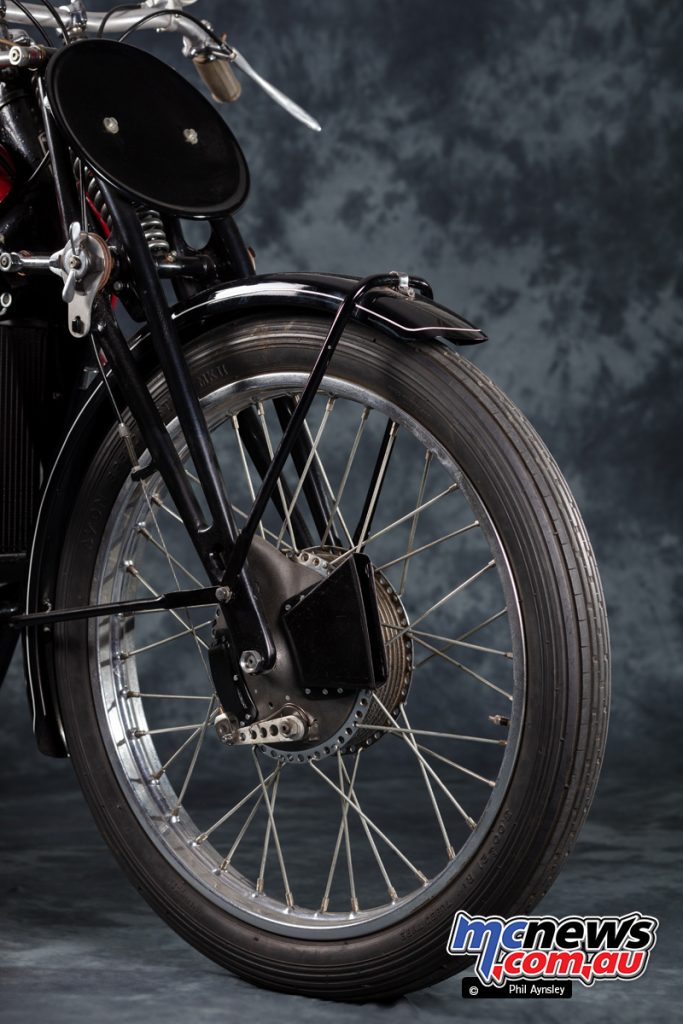
Also in 1938 the 350 motor was redesigned (along with the 500, 600 & 700cc versions used in sidecars) with the Ladepumpe cylinder back at 180º, facing down.
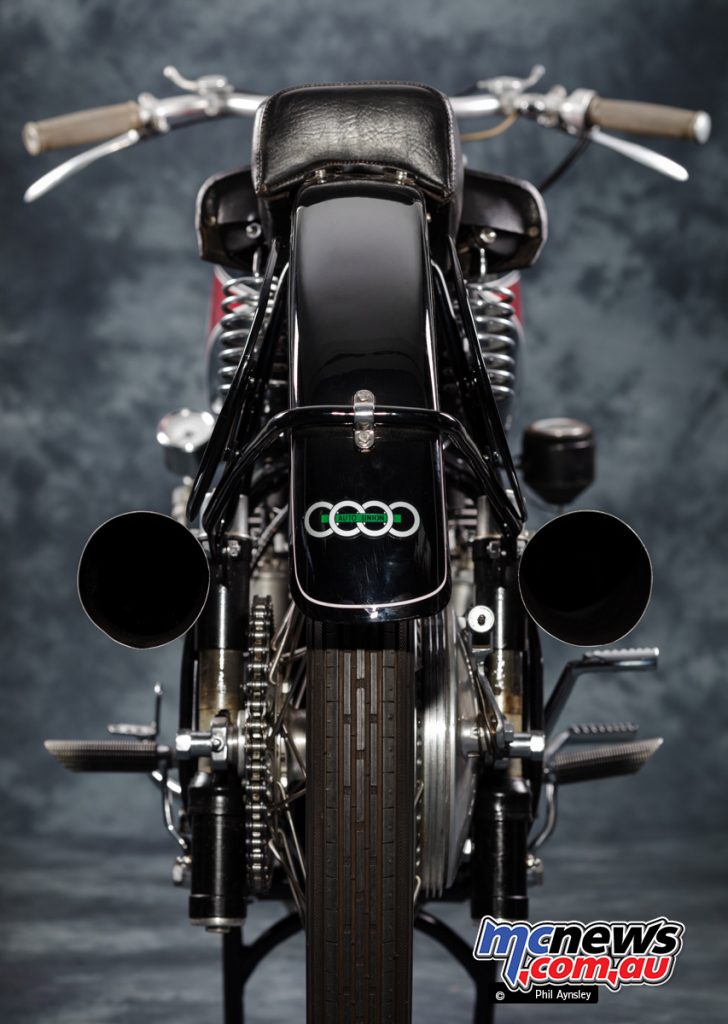
These twin split-singles had a total of five pistons and six conrods, all mounted on a common crankshaft! The bikes were notorious for both the noise that made and their high fuel consumption – around 15mpg or 15lt/100km.
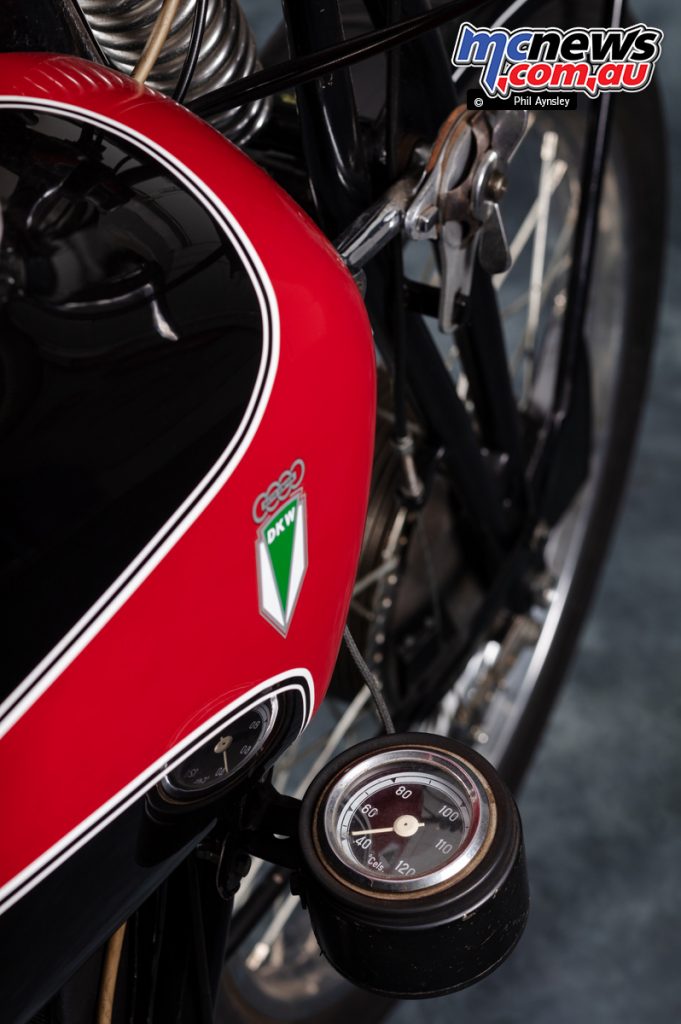
The 350 SS seen here was good for 32hp at 5000rpm and had a top speed of 170km/h.
